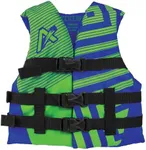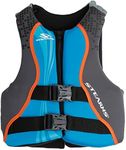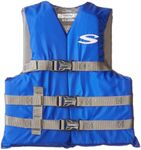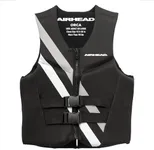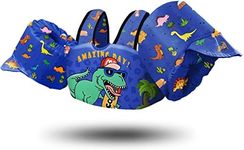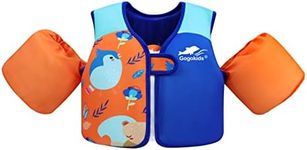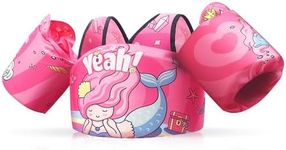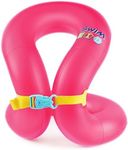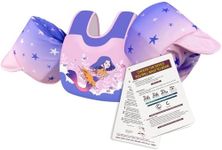Buying Guide for the Best Kids Life Jackets
Choosing the right life jacket for your child is crucial for their safety during water activities. A well-fitted life jacket can provide the necessary buoyancy to keep your child afloat and safe. When selecting a life jacket, consider the specific needs of your child, such as their weight, swimming ability, and the type of water activity they will be participating in. Here are some key specifications to help you make an informed decision.Size and FitThe size and fit of a life jacket are essential for ensuring it works effectively. Life jackets are typically categorized by weight ranges and chest measurements. A properly fitted life jacket should be snug but not too tight, allowing for comfortable movement. For infants and toddlers, look for life jackets with additional head support and a crotch strap to prevent the jacket from riding up. For older children, ensure the jacket fits securely and does not slip over their head when pulled up by the shoulders. Always refer to the manufacturer's sizing chart and have your child try on the life jacket before purchasing.
BuoyancyBuoyancy refers to the life jacket's ability to keep the wearer afloat. It is measured in Newtons (N) and varies depending on the type of life jacket. For children, life jackets typically range from 50N to 100N. A 50N life jacket is suitable for calm, inland waters where rescue is likely to be quick, while a 100N life jacket provides more buoyancy and is better for open waters. Consider the type of water activity and environment when choosing the buoyancy level. For non-swimmers or younger children, a higher buoyancy level is recommended for added safety.
Type of Life JacketThere are different types of life jackets designed for various water activities. Type II life jackets are generally recommended for children as they provide good buoyancy and can turn some unconscious wearers face-up in the water. Type III life jackets are more comfortable and allow for greater movement, making them suitable for activities like boating or kayaking. However, they may not turn an unconscious wearer face-up. Choose the type of life jacket based on the specific water activity and the level of safety required.
Material and DurabilityThe material and durability of a life jacket are important for its longevity and performance. Most life jackets are made from durable nylon or polyester with foam padding for buoyancy. Look for life jackets with strong, tear-resistant outer shells and high-quality stitching. UV-resistant materials are also beneficial as they can withstand prolonged exposure to sunlight without degrading. Consider the frequency of use and the environment in which the life jacket will be used to determine the level of durability needed.
Safety FeaturesAdditional safety features can enhance the effectiveness of a life jacket. Look for life jackets with reflective strips for increased visibility in low-light conditions. A whistle attached to the life jacket can be useful for attracting attention in an emergency. For younger children, a grab handle on the back of the life jacket can make it easier to lift them out of the water. Ensure that all buckles, zippers, and straps are secure and easy to use. These features can provide extra peace of mind and improve overall safety.


